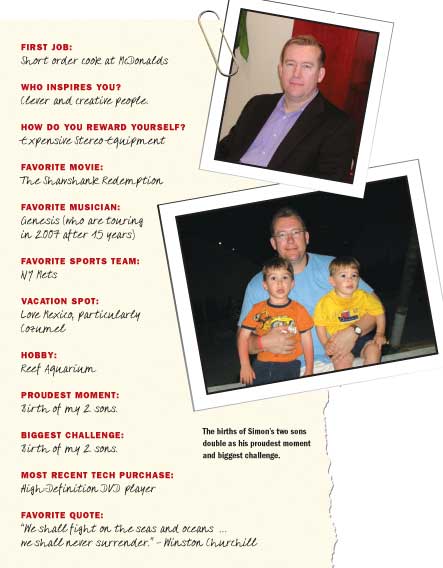Catching up with Simon Ellis, Supply Chain Futurist at Unilever
This month, CGT Executive Editor Kara Romanow catches up with Simon Ellis, who carries the unique title of Supply Chain Futurist for Unilever. Here, Ellis ponders the future of the consumer goods market. Read on to find out his take on how to best manage and leverage the plethora of consumer data, how to tune into the needs of your retail partners and how to tackle post-hype RFID.
 | What keeps you up at night? What is the biggest challenge for CG manufactures in the next three years? ELLIS: It is the use of data. We are being inundated with new (or in some cases, not so new) forms of demand and movement data with very little clarity on how best to take advantage of it. Whether truly using point-of-sale (POS) data, or figuring out how to use newer data, like EPC, the big challenge is what do we do with it all and how dramatically it changes our systems over the next few years. EPC has another impact here also, as we face the probability of needing to now track unique cases throughout our systems ' where in most instances today we may only track unique pallets. Compounding that will be the need to track those individualized cases across multiple RFID read points. What we do with all that data, and how we translate it into useful, actionable insight is what I see as the big challenge. How do manufacturers and retailers better collaborate? ELLIS: I think that at the end of the day, collaboration only works when it is in the best interest of both parties. This simple rule is often forgotten in the process of pursuing ones own agenda under the guise of collaboration. I think the key is to really understand what it is that |
worries your customer, and make sure that any collaborative conversations include these things. Maybe you can "scratch an issue off your list" by helping your customer to do the same. The other important learning, for me at least, is to look at the extended supply chain, and not just our own particular piece of it. I remember in the early days of Efficient Consumer Response (ECR), going to see a customer about cost-to-serve, and how we had identified some areas of potential cost reduction ' we would have to incur some cost in order for the customer to save twice that cost. So, without some level of collaboration (sharing costs and benefits) and without the perspective to look at the entire supply chain, nothing would happen because we were all so jealously protective of our individual piece of the pie.
What does the future of RFID look like? It seems lately that the "bloom is off the rose?"
ELLIS: Well, I think it is important to remember that as an evolving technology, it is particularly vulnerable to the "perception swings" that accompany any new technology. One month it might be at the peak of the hype curve; the next at the bottom of the "trough of disillusionment". The reality is that it should be neither. So, when RFID was the hysterical rage, we never viewed it that way ' rather we looked at it as a very promising technology for use in the supply chain that would inevitably experience some teething problems. Generation 2 technology has proven to be a huge improvement over Generation 1, but we still have a ways to go. The business case for mass/ubiquitous tagging in consumer packaged goods is still a challenge, but targeted tagging opportunities on things, like promotional displays are quite appealing. So, no, I do not thing the bloom is off the rose,' rather that most of the hype is gone and we are now addressing some of the remaining issues.
The other thing to consider is that we will not "pilot" RFID forever ' at some point we must either give it all up as a bad idea, or start to roll it out. I do not believe that the former is likely, so it is incumbent upon us all to figure out how to scale RFID ' sooner rather than later. This means going back to manufacturing factories and raw material suppliers to implement scalable, economic tag application techniques. It means looking at ways to handle full pallets versus case picking in the distribution centers. It means looking at how to handle full pack versus break pack items relative to the retail stores. It isn't clear to me that anyone is yet looking at these things in the detail necessary to provide scalable implementations. CG
